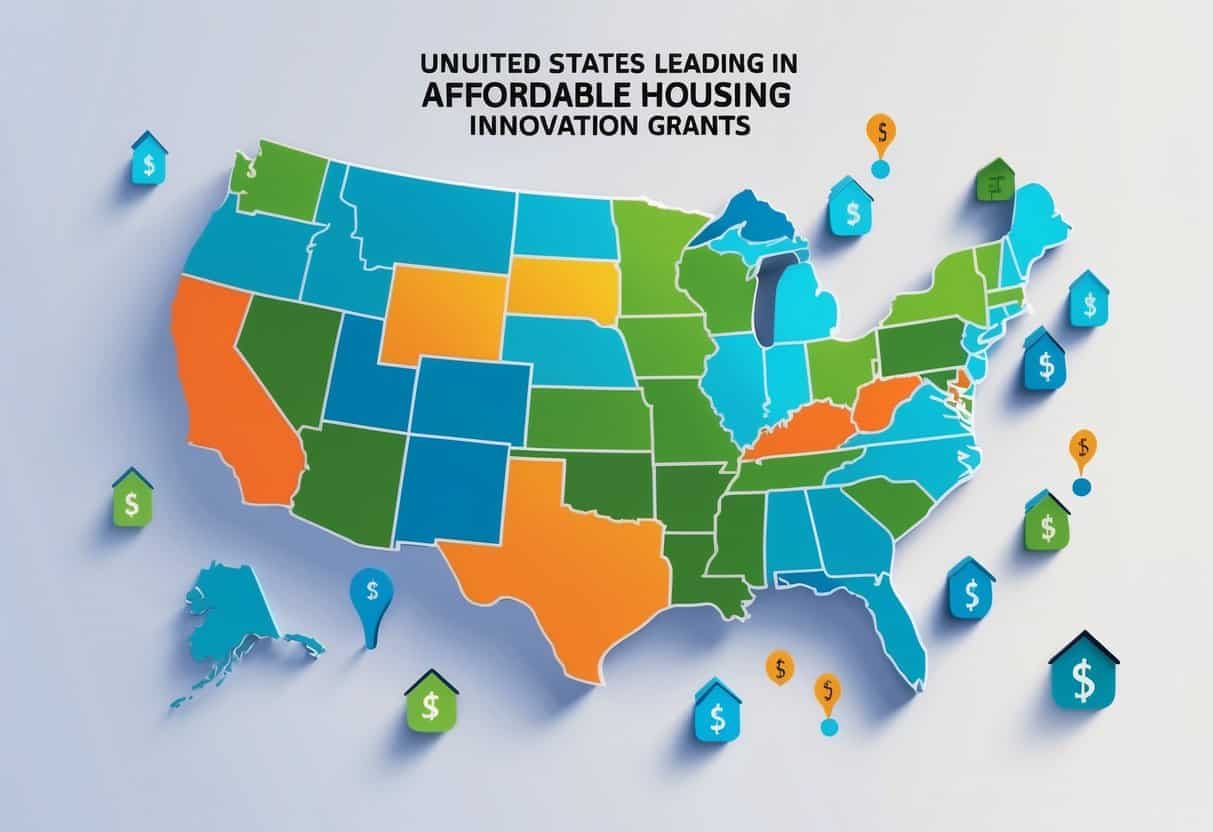Plenty of states are stepping up to tackle affordable housing challenges by using innovation grants. These grants let communities try out new ways to build and keep affordable homes, often faster and at lower costs.
Curious how top states are making a dent in housing shortages? Dive in and see how these funds are actually moving the needle on affordability.

Programs supporting state and local teams offer grants backing creative projects aimed at real housing problems. Some focus on faster construction or slashing expenses.
Others help organizations build up their skills so they can respond to housing needs more effectively. It’s interesting to watch how strategic funding can spark practical change, even if it’s not always obvious at first.
Key Takeaways
- Some states are leading the charge with grants to improve affordable housing.
- Grants can mean quicker, cheaper construction and stronger local housing programs.
- Innovation funds push for results that actually boost housing options.
Key States Advancing Affordable Housing Innovation Grants
A handful of states are out in front when it comes to using innovation grants for housing. They’re trying out new finance models, improving design, and building partnerships that fit local needs.
California’s Leadership in Innovative Housing Solutions
California’s put big money behind housing finance innovation. Case in point: $45 million for 14 projects testing new ways to make homes more affordable.
Projects range from mixed-income developments to partnerships with nonprofits and private groups. The state also leans on technology and streamlined rules to cut costs.
California’s approach blends strong government backing with flexible funding. This gives agencies and developers the room to create housing that fits their communities.
Texas’s Pioneering Approaches to Housing Affordability
Texas is piloting creative solutions with innovation grants. They’re testing new policies that tackle zoning and financing barriers.
Local housing agencies work directly with communities, which keeps things grounded. Texas programs often zero in on rapid housing development in high-demand spots.
They also put a spotlight on helping vulnerable groups, making sure low-income families and individuals have stable places to live.
Partnerships between state agencies and nonprofits bring together federal, state, and private dollars. That kind of mix can really stretch resources.
Minnesota’s Initiatives in Affordable Housing Innovation
Minnesota’s grants fund projects that link affordable housing with supportive services. People don’t just get a roof—they get help with health or finding work.
Innovation grants here support smaller developments that focus on sustainability and local involvement. There’s also a push for building up agency capacity to handle unique, community-specific challenges.
Minnesota’s not just about the big cities; rural areas get attention too, with strategies tailored to local needs. They’re pretty data-driven, always tweaking things to get better results.
Grant Programs Powering Affordable Housing Advances
You’ll find lots of grant programs fueling affordable housing innovation. Some are state-run, others are federal partnerships, all aiming to build new homes or improve old ones.
State-Funded Innovation Grant Models
Many states have their own grant programs for housing innovation. These often target new building methods, affordable rentals, and keeping communities stable.
Some states hand out capacity-building grants to local teams. That means local governments and organizations get help planning, financing, and managing projects.
Support might cover data analysis, community outreach, or project design. States usually want proposals that show long-term benefits—not just a quick fix.
A lot of these grants try to link affordable homes with jobs, transport, and services nearby. Application processes can be a bit of a slog, with plenty of paperwork and proof of impact.
Federal Partnerships and Funding Synergies
On the federal side, several programs team up with state efforts. You’ve got the Community Development Block Grant (CDBG), HOME Investment Partnerships, and the Low Income Housing Tax Credit (LIHTC).
Funding is available through grants.gov or esnaps.hud.gov, but you’ll need to register first. Federal money often gets combined with state grants, boosting resources for bigger projects.
Federal programs also encourage local innovation. They offer technical help and pilot funding to test new ways to make housing cheaper and better.
When federal and state funding align, there’s more flexibility to meet what each community actually needs.
Impact and Outcomes of Affordable Housing Innovation Grants
Affordable housing innovation grants have funded new projects and programs that increase supply and improve quality. They also support solutions that make housing more stable and affordable over time.
Success Stories and Demonstrated Results
There are some clear wins in states using innovation grants to build affordable homes faster. Some programs cut costs with new materials or modular construction.
Others combine housing with services like job training or healthcare. In some places, funding has helped reduce homelessness by offering quick access to stable homes.
Grants have also sparked partnerships between local agencies and private builders, speeding up how fast projects get done. It’s not perfect, but these investments are showing real, measurable improvements in affordable housing.
Long-Term Benefits for Communities
The long-term effects of these grants go way past just building more houses. You get improved community health, since stable, quality housing means less stress and fewer physical illnesses.
Better housing stability can actually help people keep their jobs. That, in turn, lets them contribute more to their neighborhoods.
Communities see fewer folks struggling with homelessness or housing insecurity. Over time, these programs can chip away at poverty and make housing a bit more fair.
It’s not instant, but your community’s resilience starts to build. These housing innovations lay down a real foundation that supports growth—and, honestly, a bit more peace of mind.
